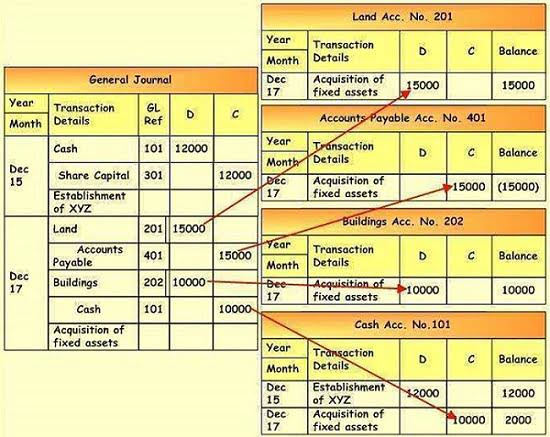
As a supplier the individual adjusts his sales to insure that anticipated opportunities forgone, marginal opportunity cost, equals price. Hence marginal opportunity cost in the numeraire is equal for all suppliers…. For example, a college graduate has paid for college and now may have outstanding debt. This college tuition is a sunk cost, since it’s been incurred and cannot be recovered.
In isolation, the investment is perceived to be wise because it nets a positive return. If the government build a new road, then that money can’t be used for alternative spending plans, such as education and healthcare. We’re transparent about how we are able to bring quality content, competitive rates, and useful tools to you by explaining how we make money. Encyclopaedia Britannica’s editors oversee subject areas in which they have extensive knowledge, whether from years of experience gained by working on that content or via study for an advanced degree. They write new content and verify and edit content received from contributors.
Opportunity cost formula
The opportunity cost of taking a job offer, for instance, is the money you could have earned if you’d taken a different job offer. To use a more serious example, let’s say you have the choice between taking an extra shift at your job or spending the day at home with your family. If you earn $15 per hour and it’s an eight-hour shift, you stand to make $120 for your labor that day. Now you’ll miss out on time with your family, also an opportunity cost.
- A financial professional will offer guidance based on the information provided and offer a no-obligation call to better understand your situation.
- As an investor, opportunity cost means that your investment choices will always have immediate and future losses or gains.
- No matter which option the business chooses, the potential profit that it gives up by not investing in the other option is the opportunity cost.
- We are compensated in exchange for placement of sponsored products and services, or by you clicking on certain links posted on our site.
- If your current bond “A” has a value of $10,000, you can sell it to help purchase bond “B” at a slightly lower rate.
If the graduate decides to change career fields, any decision should factor in future costs to do so rather than costs that have already been incurred. So the opportunity cost of changing fields may include more tuition and training time, but also the cost of the job this is left behind (as well as the potential salary of a job in the new field). The opportunity cost of a future decision does not include any sunk costs. For example, when a company evaluates new investments, it considers both the expected return on investment and the opportunity cost, including alternative investments, the cost of debt or any alternative use of the cash.
The opportunity cost of conservation
There are a number of ways that you can go about finding the answer. First, try breaking down the problem into smaller pieces and working on them one at a time. You can also use online calculators or even practice problems to help you out. Finally, it’s always a good idea to review the basics of opportunity cost so that you have a strong foundation to work from. Opportunity cost is the extra return on an alternative available over and above the chosen option. Opportunity cost is a concept that is widely used by promoters and business analysts to conduct feasibility studies as well as to ascertain policy decisions to be taken.
- Investors might also want to consider the value of time in their calculation of opportunity cost.
- Definition – Opportunity cost is the next best alternative foregone.
- Analyzing from the composition of costs, sunk costs can be either fixed costs or variable costs.
- With that choice, the opportunity cost is 4%, meaning you would forgo the opportunity to earn an additional 4% on your funds.
- SmartAsset Advisors, LLC (“SmartAsset”), a wholly owned subsidiary of Financial Insight Technology, is registered with the U.S.
Assume that a business has $20,000 in available funds and must choose between investing the money in securities, which it expects to return 10% a year, or using it to purchase new machinery. No matter which option the business chooses, the potential profit that it gives up by not investing in the other option is the opportunity cost. The concept of increasing opportunity cost is usually seen in the production possibility frontier which shows the possibility of production of different bundles of two goods using a limited amount of resources. The Production Possibility Frontier is concave to the origin and its slope is the opportunity cost. As the PPF is concave to the origin, it shows how the opportunity cost of producing more of one good continuously increases. This increasing nature of opportunity cost is generally explained in terms of the inefficiency of resources when put to work to produce more than one kind of good.
Free Study Material
Explicit opportunity costs can be quantified monetarily while implicit opportunity costs cannot. Consider the opportunity cost of your choices when investing, whether it’s in stocks, bonds or something else. But don’t get to the point where you become paralyzed by indecision. After all, not investing at all has the greatest opportunity cost.
- This theoretical calculation can then be used to compare the actual profit of the company to what its profit might have been had it made different decisions.
- To understand opportunity cost in the business world, you need to know what economic profit is.
- But this compensation does not influence the information we publish, or the reviews that you see on this site.
- After all, not investing at all has the greatest opportunity cost.
- But the funds you haven’t spent on office furniture yet would be considered an opportunity cost because you haven’t actually spent the money yet.
- Under those rules, only explicit, real costs are subtracted from total revenue.
However, you’d have to make more than $10,000—the amount that came out of your pocket—to add value to bond “B.” Pete Rathburn is a copy editor and fact-checker with expertise in economics and personal finance and over twenty years of experience in the classroom. 1) Know the what is opportunity cost Basics- Before starting studying the concept, it is important to have a clear understanding of what it is all about and be familiar with the common terminologies. At Finance Strategists, we partner with financial experts to ensure the accuracy of our financial content.


